Amazon Echo (previous generation) Review
Amazon Echo (previous generation) Review
The Amazon Echo is finally here and it is amazing
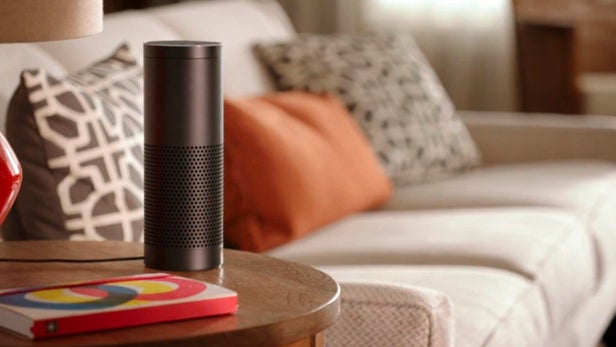
Verdict
Pros
- Nice-looking
- Easy set-up
- Versatile with ever-growing Skills selection
- Good voice recognition that gets better over time
- Voice control over smart home
Cons
- Poor sound compared to speakers in price range
- Must remain connected to the mains
- Limited choice of music streaming services
Key Specifications
- Review Price: £149.99
- Slim cylindrical design
- Voice activation
- built-in speaker
- Access to a range of content from third-party providers
What is the Amazon Echo?
Imagine a Bluetooth or Wi-Fi speaker, but one with a voice-controlled personal assistant inside. That’s the Amazon Echo, which gives you a personal assistant called Alexa. She is the first AI personal assistant to merit a dedicated device. She will listen to commands, answer questions, play music or control smart home devices. She will interact with third-party apps, answer questions and even help you do your shopping.
The Echo is a much-improved device since we first reviewed it a year ago. Amazon has been pushing out upgrades through new third-party apps called Skills. Almost two years after it arrived in the US, Amazon has finally brought the Echo and the companion Echo Dot to the UK. it’s getting better all the time and it’s already really rather good.
Watch our Amazon Echo video review
Amazon Echo – Design
It may seem quite imposing when you lift it out of the box, but the matte black or white Echo is quite inconspicuous. It won’t look out of place in most living environments.
Like many Bluetooth speakers, the cylindrical Amazon Echo offers a comparable 360-degree audio experience. The speaker grille housed on the lower half of the device offers a neat design contrast.
Atop the device are seven multi-directional microphones, which enable users to command Alexa from wherever they are in the room, and the light-up rim identifies (in cyan) that the microphone is picking up the sound. This is strangely humanising, making you aware that you have her attention.
Those lights change colour depending on the state of the Echo or the request made. For example, if it goes offline, an orange light will circulate around the rim of the unit; while processing a request, it cycles between two different blues.
You’ll be using voice commands most of the time, but there are manual controls too. The top of the device rotates to adjust the volume. If you’re worried about Alexa eavesdropping, buttons on top deactivate or enable the microphones.
Related: Sonos One review
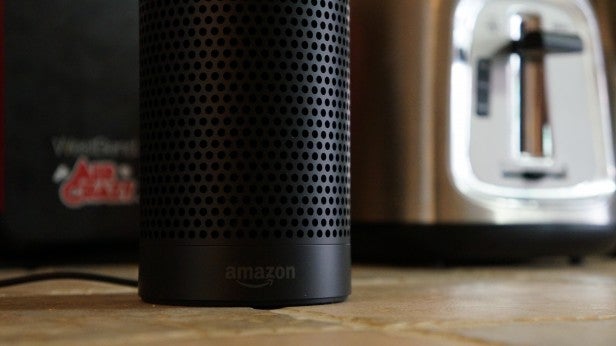
Once you’ve found the perfect position for the Amazon Echo in the home, it’s unlikely you’ll move the unit, so the rather hefty 1.7lb weight is a non-issue. Unlike most Bluetooth speakers, it must remain connected to the mains at all times.
This makes sense: a flat battery isn’t much to a device that lives and dies by constant connection to the internet. There’s no 3.5mm jack either, so external audio devices must connect via Bluetooth. NFC is missing too.
If you’re seeking a portable experience, you’ll need the Echo Dot. This cheaper edition will connect to Wi-Fi and mobile hotspots, plus it has Bluetooth, a 3.5mm jack and offers nine hours of battery life. The Dot will be released in the UK on 20 October.
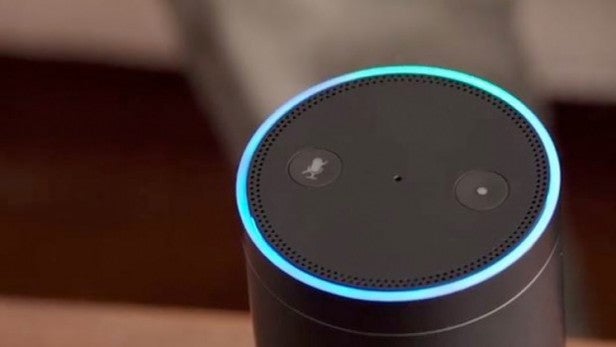
Amazon Echo – Setup
Even for those new to smart home devices, setting up the Echo is quick and easy. Once plugged in, the first step is to download the companion app for iOS, Android/Amazon Fire. You can also visit Amazon.com/echosetup on the web.
From there you’ll pair the Echo with your home Wi-Fi connection. Connectivity is super-reliable, even though the Echo is about as far away from my router as it could be. I’ve never experienced a drop off while our internet connection is active.
You don’t need another device to get plenty of use out of the Echo. The Alexa app allows you to add new Skills – Amazon’s parlance for third-party apps. With one tap, it’s possible to add Spotify integration, or BBC news, Uber rides and pizza orders from Just Eat.
Linking your phone or tablet via Bluetooth is also simple. Just say “pair”, find the Echo within your phone’s settings and connect. You can set the name that Alexa responds to, but the only options are Alexa, Amazon or Echo. It’s a shame that you can’t name it, and it would be nice to be able to choose from a few voices.
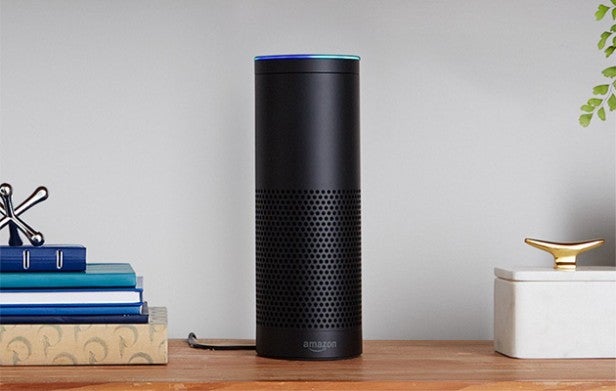
Amazon Echo – Features
It’s difficult to know where to start in this section, since the Echo is now capable of so much.
There are now thousands of skills, although a great number of those are silly “daily facts”, “pick-up lines” or “random quotes”. There are some useful ones, however.
Ordering an Uber via Alexa feels like a miracle and the National Rail skill is great for regular commuters. If you tell the app your commute, Alexa will provide a traffic update before you set off.
It’s possible to cut out many of your common daily searches, and instead just ask Alexa. She can connect to a Google calendar and handle your schedule too – which she does superbly. Here’s an example conversation:
“Alexa, add an item to my schedule.”
“Okay, when?”
“1pm.”
“On what day?”
“Today.”
“What is it?”
“Go shopping for crisps.”
“I have added go shopping for crisps at 1pm today to your schedule, is that okay?”
“Yes.”
And this isn’t the only way to add items; you just talk to her as if you were talking to a human and she works it out. She can hold multiple profiles, so an entire family can use Alexa to set events. Switching between profiles is simply a matter of speaking to Alexa about it.
She will control most smart devices directly – all you need to do is tell Alexa where things are. Simply being able to say, “Turn on the lights in the kitchen” is brilliant fun, and with IFTTT (If This Then That) you can make her do almost anything. It makes any smart home device in your house far more user friendly. IFTTT compatibility is US-only at the moment, but Amazon tells us it will come to the UK soon.
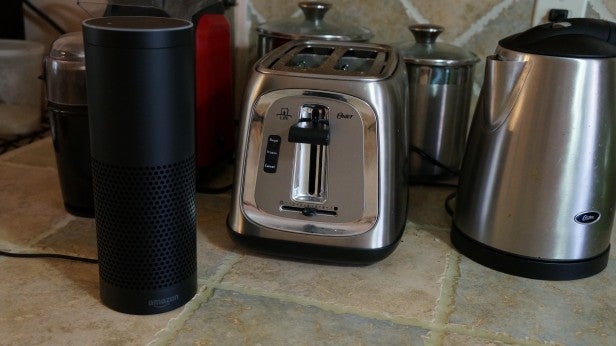
You can request music through Spotify, or Amazon Prime Music. Alexa can struggle sometimes when you request something vague, but if you set Spotify as the main player then she will deal with loose requests such as “upbeat music” happily, so long as there is a playlist somewhere on Spotify with that name. You’ll need a Spotify Premium subscription to do this, however.
When a song is playing you can ask what it is, or just tell her to skip it. Also, if you request that Alexa play some music, she’ll try to find something you’ll like based on what you’ve listened to before. She can also play radio stations.
Alexa will also retrieve podcasts for you, although the phrasing is a little annoying. You have to ask for it with “from TunedIn” – a skill that comes preinstalled – on the end, and it downloads only the latest podcast. I’m sure that will get fixed soon.
If you ask Alexa “what’s up?” you’ll receive a “Flash Briefing”, which is a personalised news update from your favourite sources. I have the BBC, Sky News and The Guardian. She will even give you the latest sports news about your favourite team.
And the best part about all this? 98% of the time, it just works. All it takes is a little finagling and account linking to get everything set up.
Alexa can look things up as well: the command “Alexa, who plays [character] in the show [show]” is great for when you can’t quite place a character while watching something on Netflix.
Amazon Echo – Sound Quality
Requesting music via voice command is a bonus and often a crowd-pleaser. Don’t treat it like a sound system, though. If you’re purchasing the Echo purely as a speaker, your money is better spent elsewhere.
Sound quality is agreeable enough at low-to-middling volumes. It’s clear and detailed, it’s tonally balanced, and there’s even a bit of weight to the sound. As a kitchen companion, it does a great job alternating between serenading you and converting your baking measurements.
If you do want to crank it up, it gets a bit distorted. It’s also not expressive enough to be the centre of attention, so don’t use it for parties. The £60 Jam Heavy Metal HX-P920 would be a better option for price, sound quality and portability.

Amazon Echo – Voice recognition
Each of the Echo’s seven microphones enjoys far-field voice recognition. Amazon boasts that wherever you’re in the room with the device it will hear you – even over any music you’re playing from the speaker.
This works well when music is at moderate levels, but less so at maximum volume. You may find yourself shouting to get Alexa’s attention.
The voice recognition has improved since the Echo’s launch. In fact, it’s incredibly good, even if you phrase something a little strangely or even mumble a couple of words – she gets it. It’s leagues ahead of Xbox One’s voice commands.
In addition, you often don’t have to use specific commands; you simply make your requests in the way you would when talking to a human and, most of the time, Alexa will work it out.
Note that Amazon sends all of your requests to the cloud for analysis and keeps them there. While this can be handy, it’s also disconcerting from a privacy perspective, but you can delete them.
Voice commands can sometimes be a little clunky, especially when using some Skills. I still have to ask “Alexa, ask StubHub,” or “Alexa, ask Fitbit.”
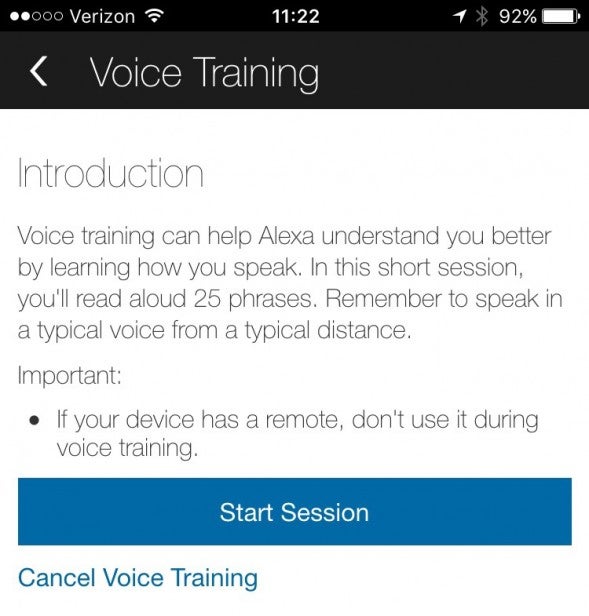
Related: Google Home – Everything you need to know
Amazon Services
As is the case with most of Amazon’s hardware, there’s an encouragement towards using Amazon’s services. The company wants you to make shopping lists, repeat favourite orders and track packages. It would rather you play audio books through Audible and music through Prime, but you can change the default music provider to Spotify. You’re not locked in.
Unfortunately, if you stream from Apple Music, Tidal, Google Play or elsewhere, Alexa is not your friend. You’ll need to connect through Bluetooth and use it as a speaker. You can import music to Amazon if you want, and the first 250 songs are free.
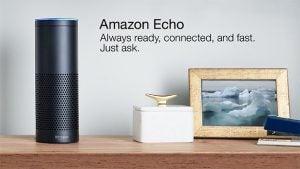
Amazon Echo – Smart Home
The Echo is already compatible with many of the top smart home products. Hue, Nest, Lyric, Honeywell, WeMo, iHome, to name a few. Plenty of other products will work through a Hub. It’s perfect if you’ve already invested in smart home tech.
It’s also a more open and welcoming approach than that of Apple. This is because products won’t have to conform to a single standard such as HomeKit. For example, I don’t envision Nest becoming a HomeKit-compatible product.
Should I buy the Amazon Echo?
TrustedReviews was lucky enough to be sent an Echo to review. Only a few hours of testing and I had decided that I had to order one for myself.
It’s now part of my house, controlling all the lights and other smart devices. I’ve found the shopping list and to-do list particularly useful for when you remember something you have to buy or do, and then normally completely forget about it.
The Amazon Echo has completely replaced the radio in my kitchen and is a great way of controlling a number of different systems. If you like gadgets and have a Spotify account then it’s the best device ever. And it’s improving all the time as stuff is added to it. There are a lot of great US-based skills that haven’t been made for the UK yet, and when they do Alexa will get even better.
Alexa isn’t quite Jarvis from Iron Man yet, but I have no doubt that she’s on the way there. The original iPhone changed how we interact with technology, allowing us to control devices with apps via a screen and clean UI, and now Alexa promises to do the same for devices with Wi-Fi – but this time using voice.
Verdict
Here is a program I just invented with Alexa.
“Alexa, set an alarm for an hour.”
“Setting an alarm for an hour.”
“Play some songs for sleeping.”
“Playing some songs for sleeping.”
“Turn the music off in 15 minutes.”
“Okay.”
A computer-assisted nap. The future is now. The only way it could have been better is if she had made me a cup of hot milk – and I think I’ve worked out a way do that using IFTTT.

